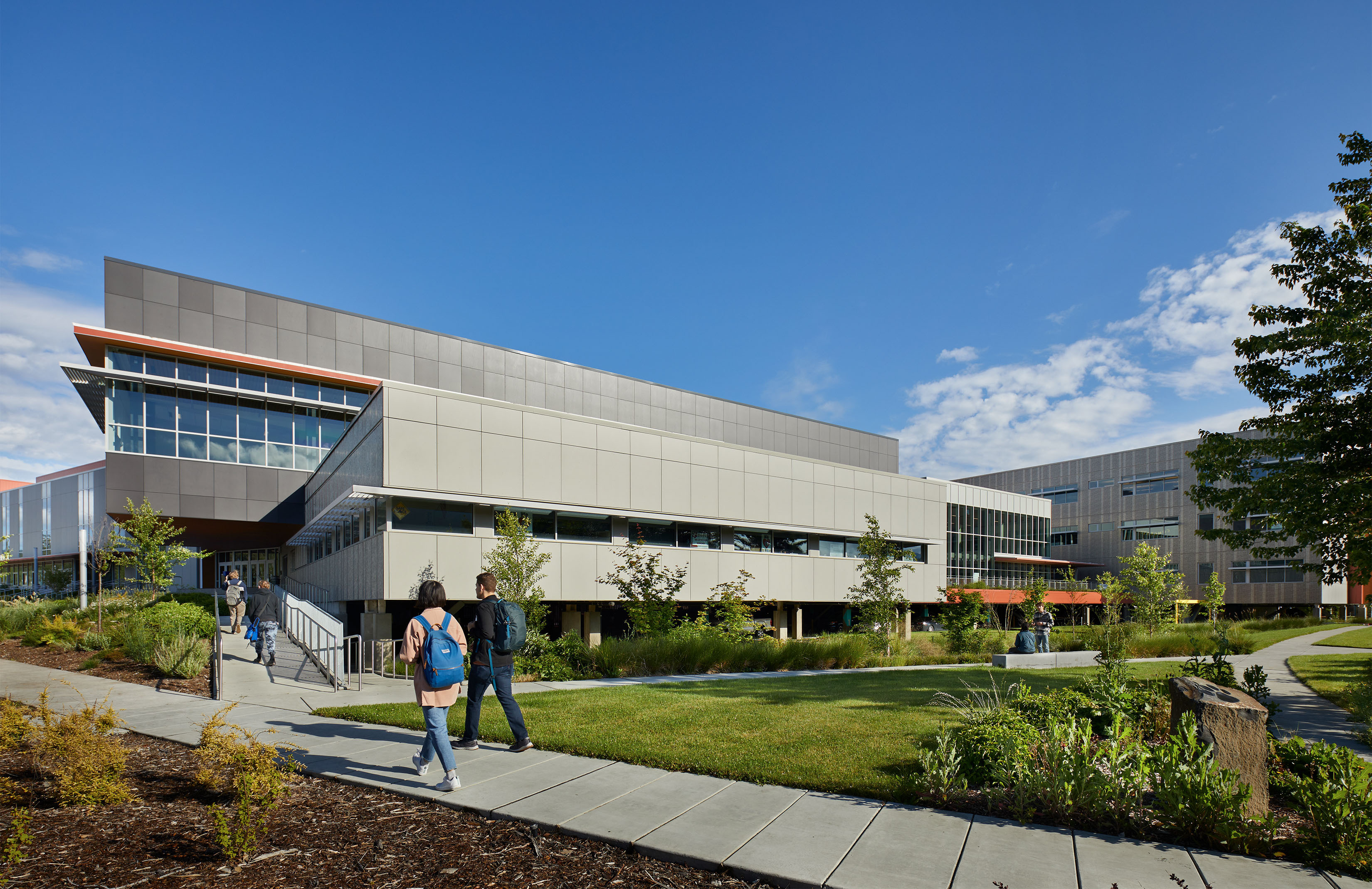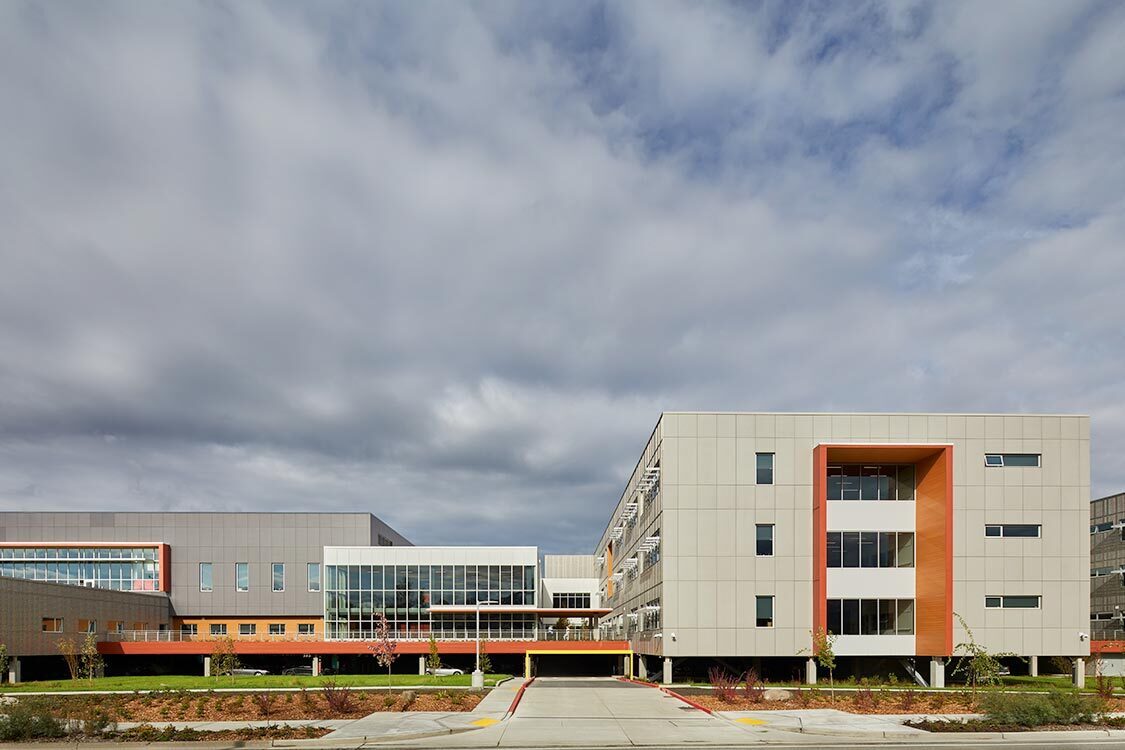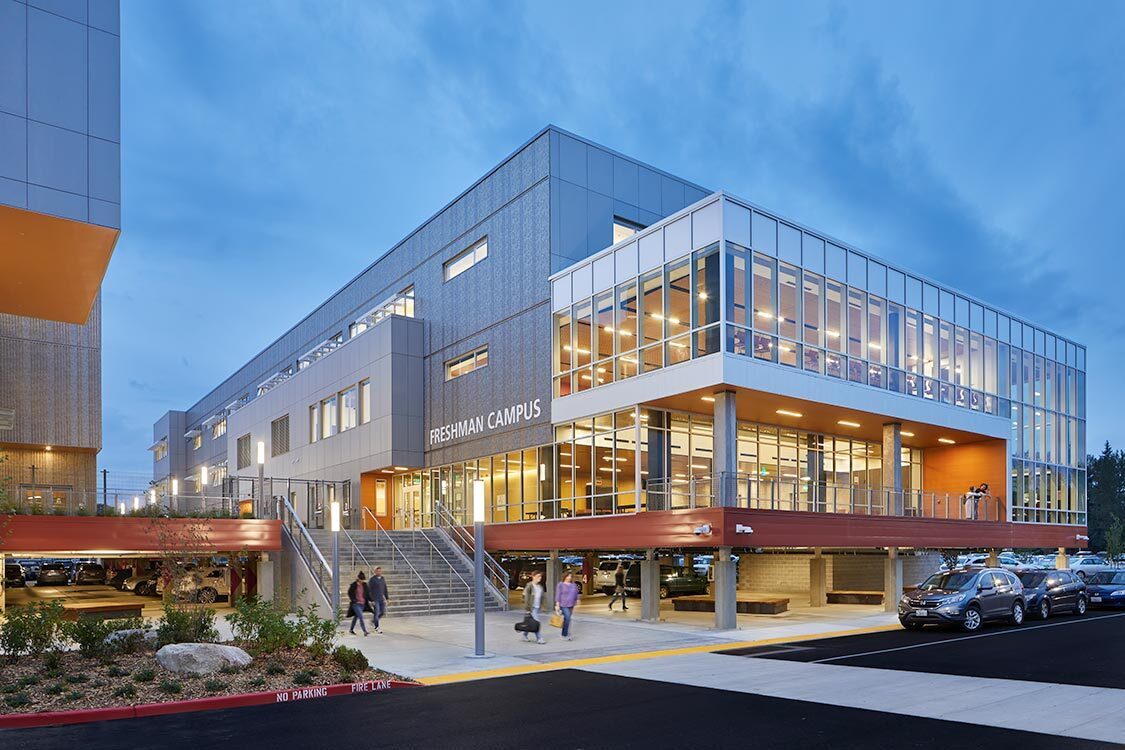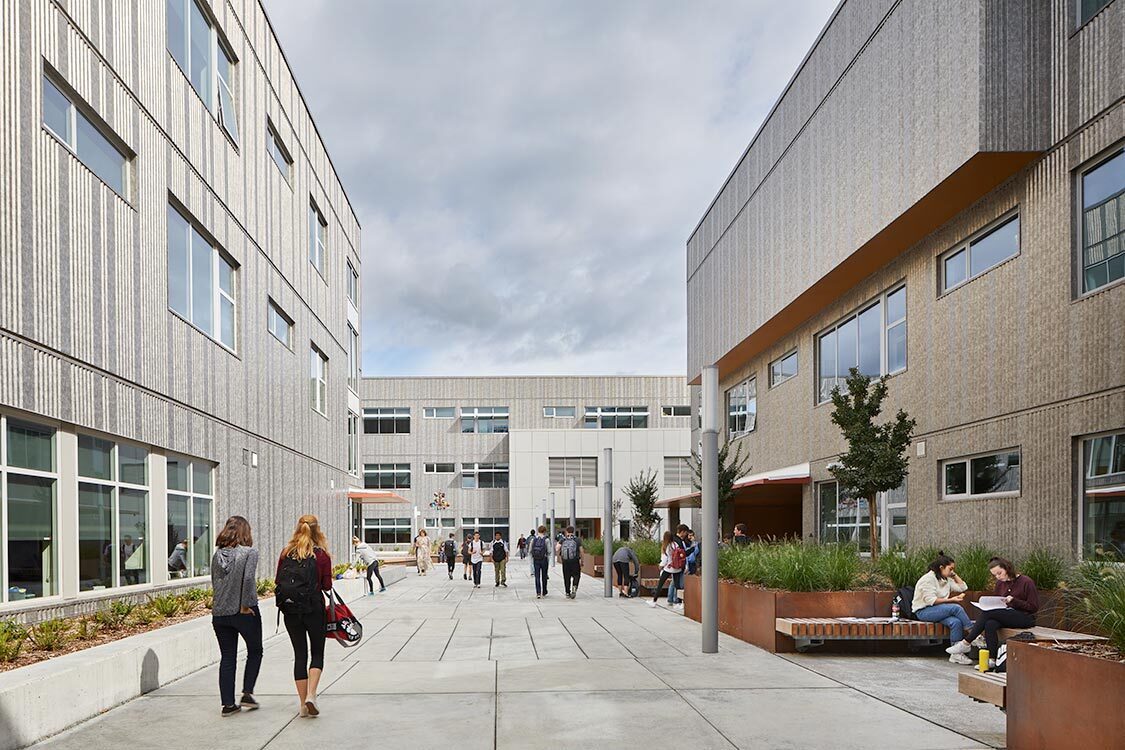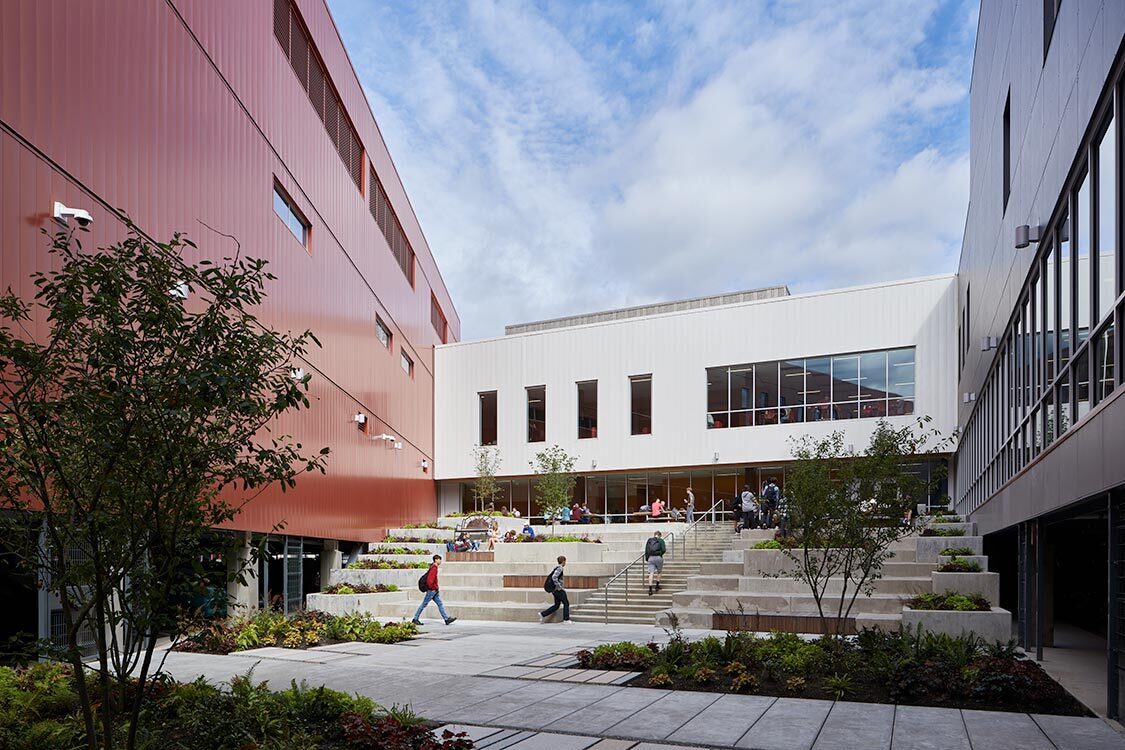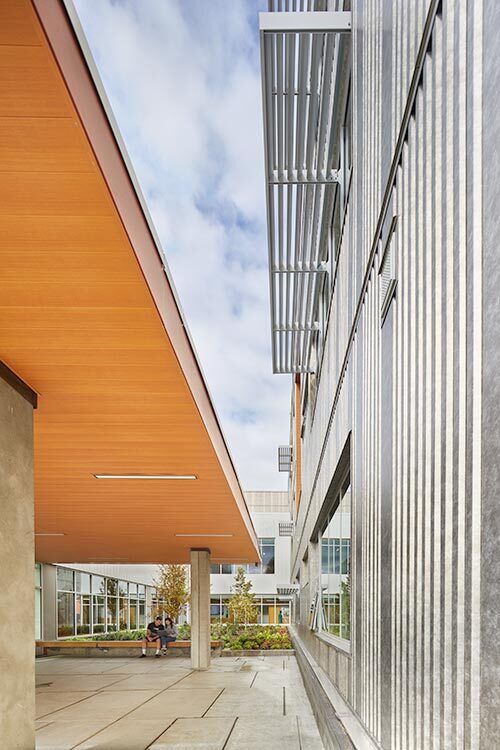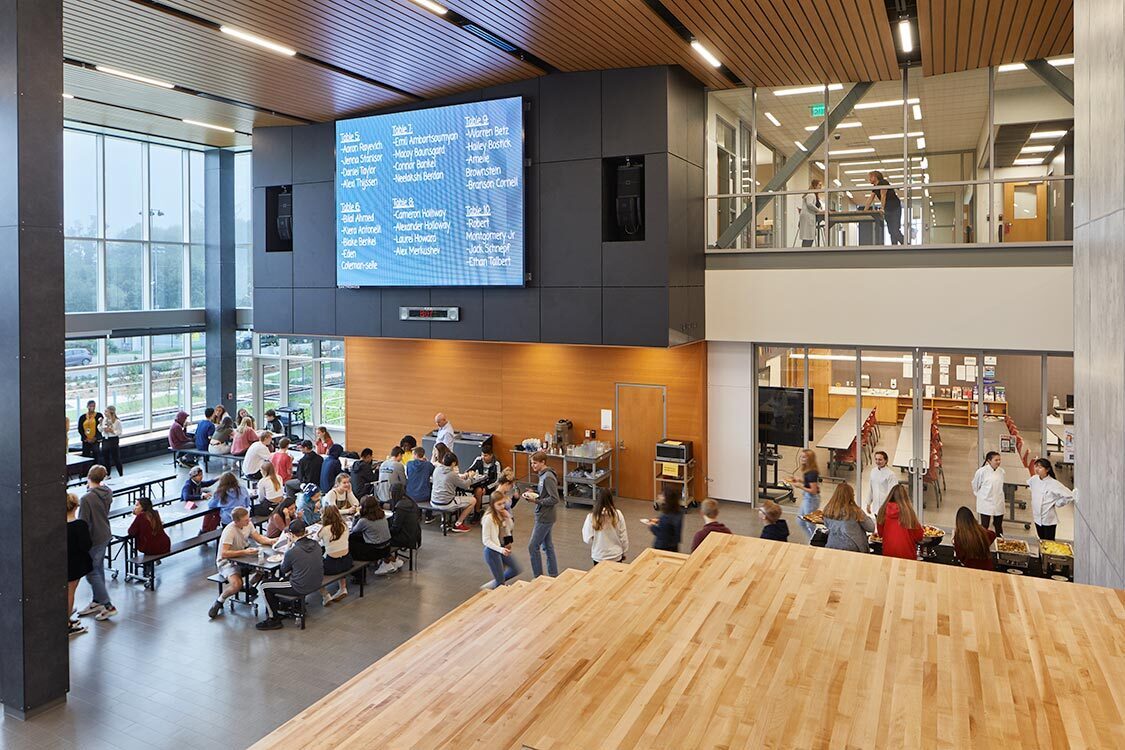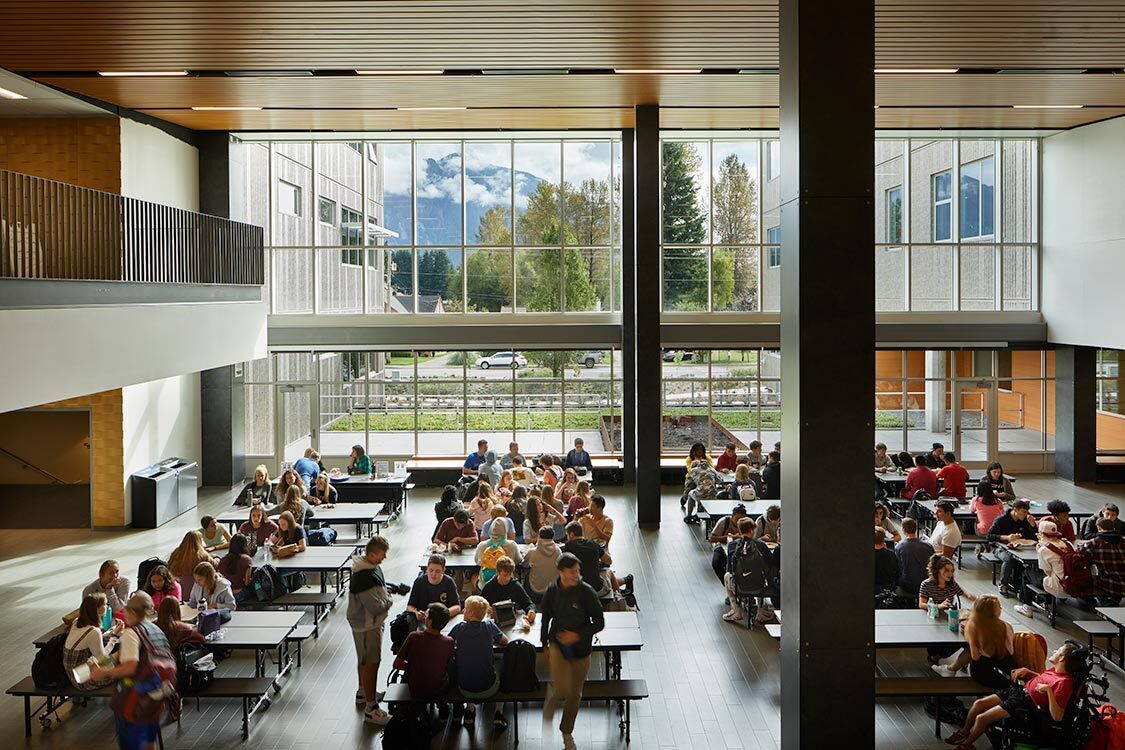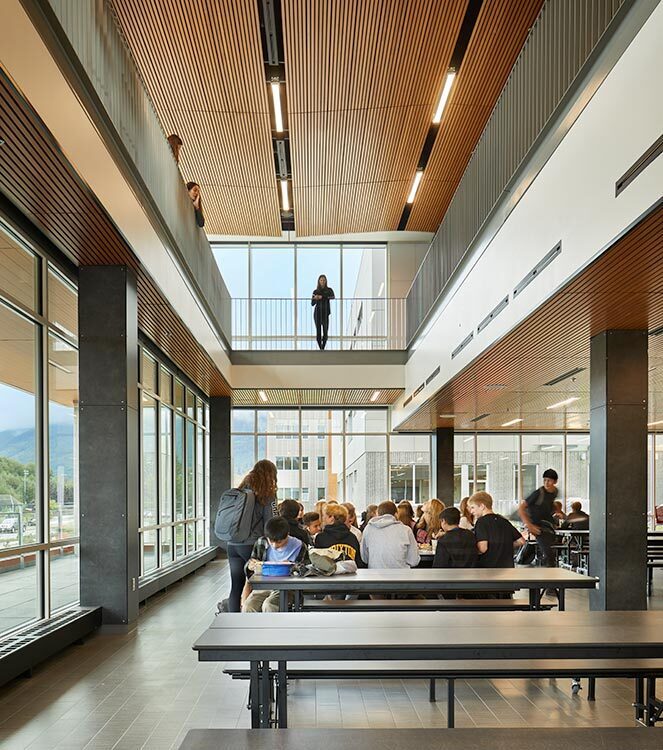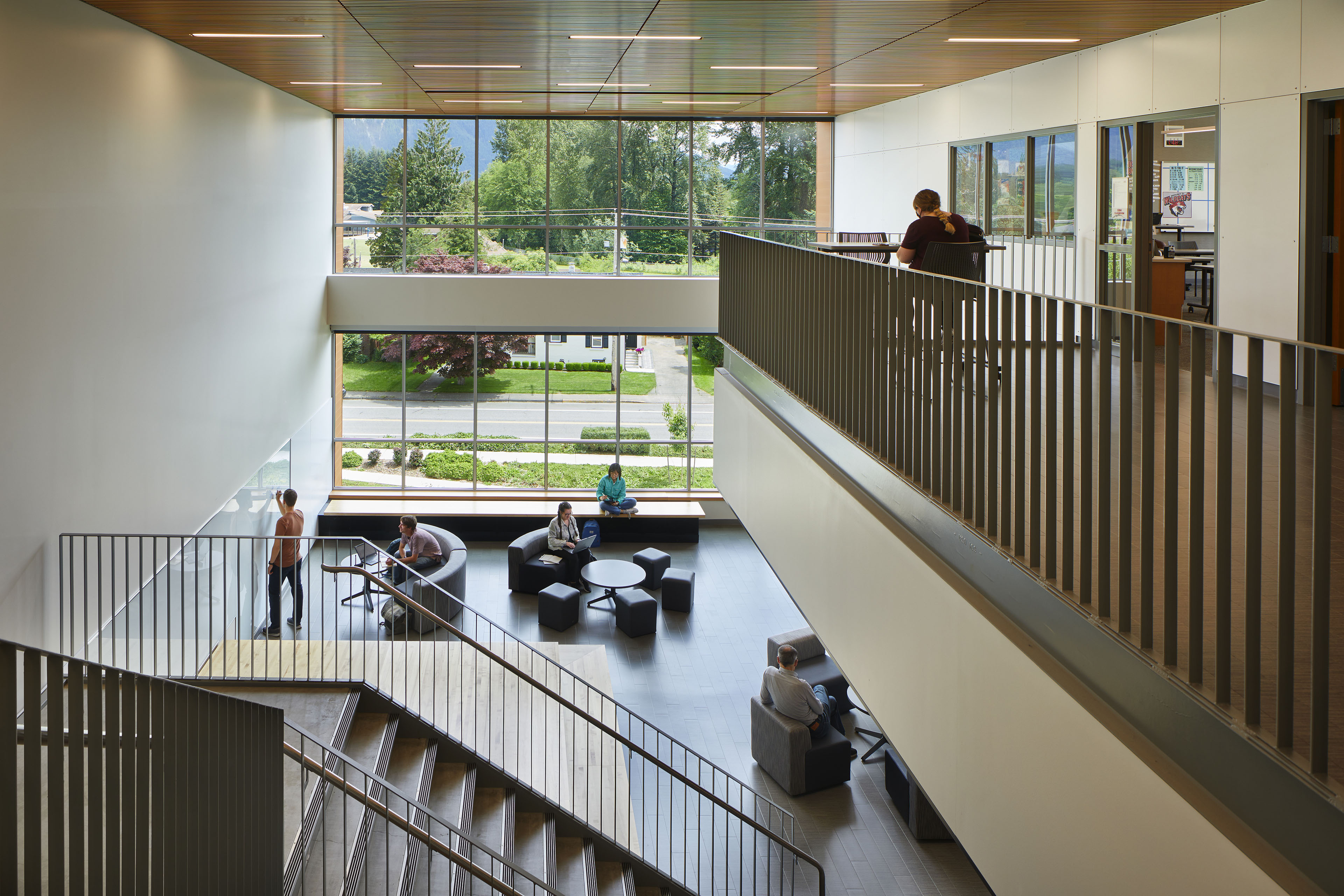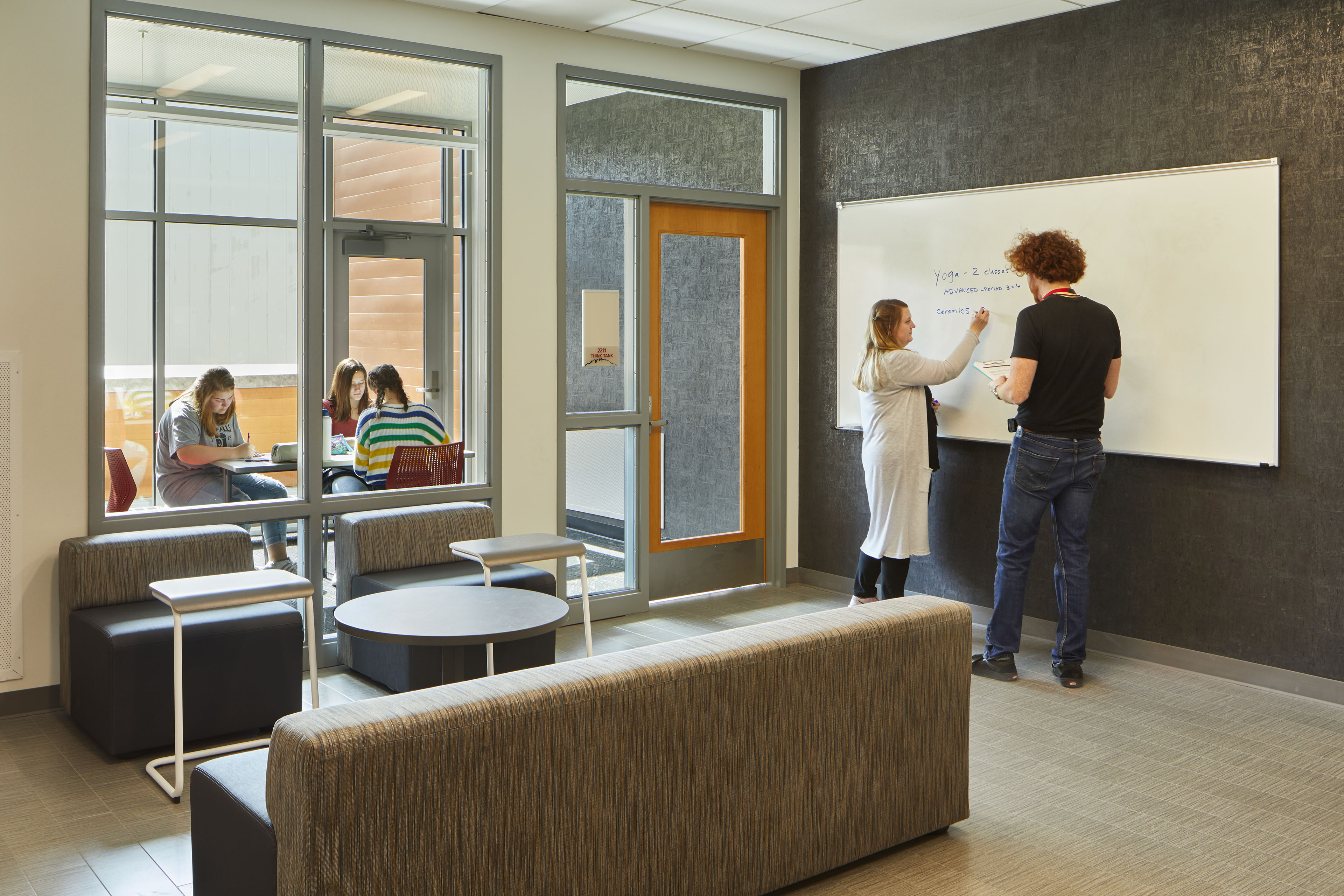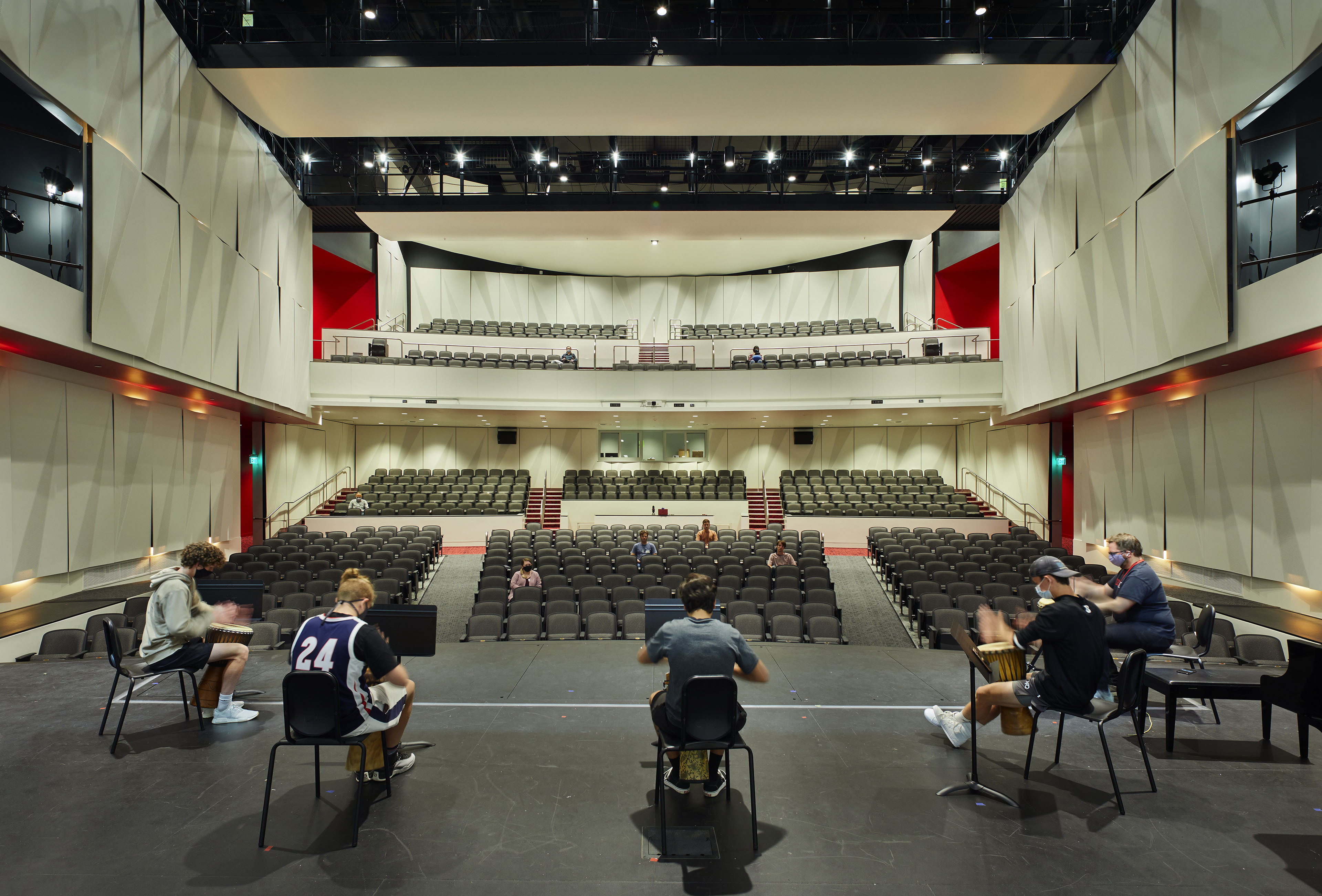Mount Si High School
Snoqualmie, Washington
Designing for Resilience
Mount Si High School presented a range of extraordinary challenges and opportunities for the District and design team.
- How do you protect a school located in a flood-prone river valley?
- How do you design a student-centered environment with spaces for multiple social, emotional, and learning needs on a large-scale campus?
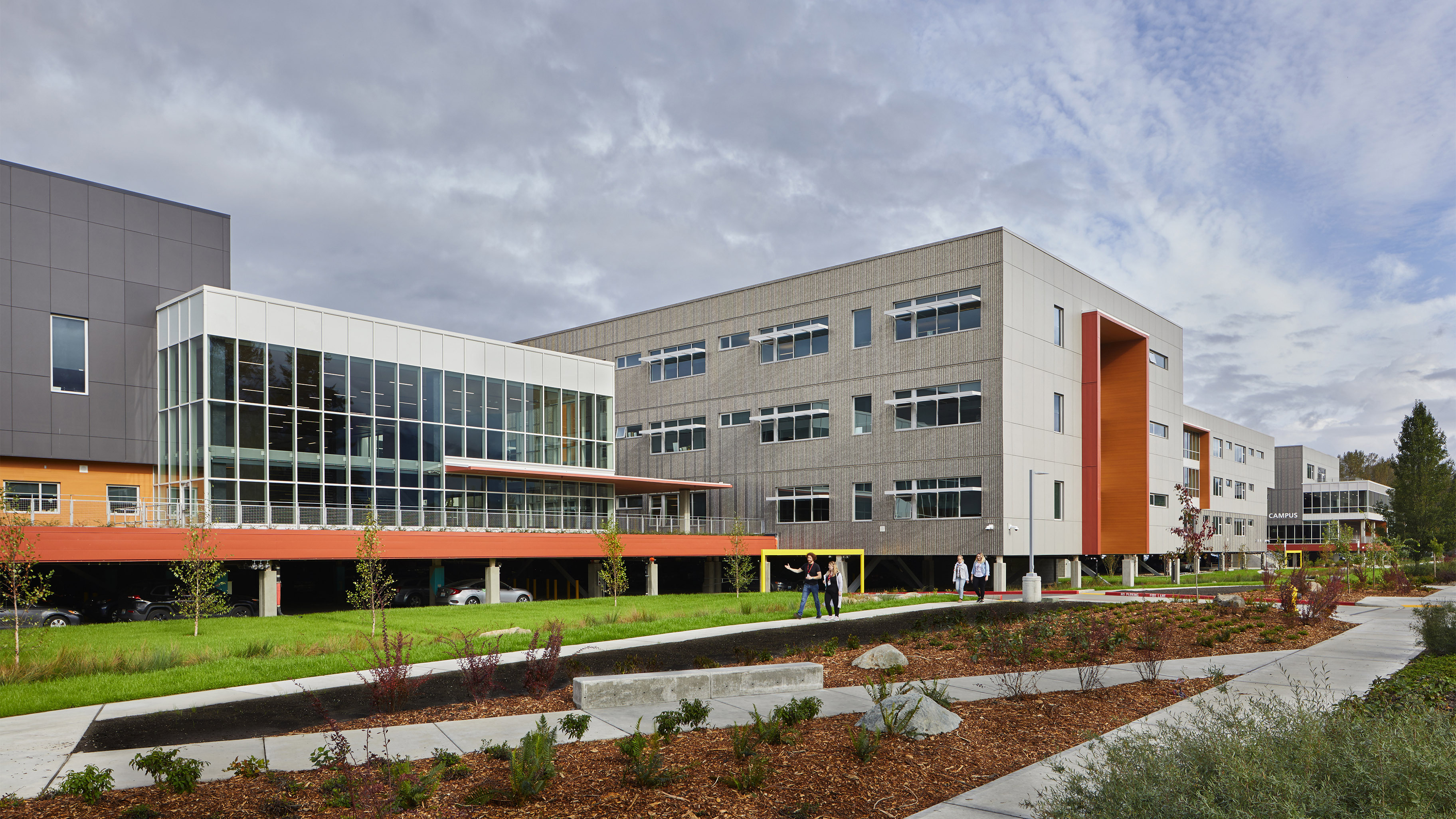
Elevating the campus physically, educationally, and experientially
Located in the flood-prone Snoqualmie River valley, Mount Si High School is a beacon of resilience. The community has co-existed with the seasonally flooding Snoqualmie River for generations and wanted to rebuild within the floodway, but to do so with eyes wide open. Seven connected school buildings are composed on a created ground plane lifted above the native grade on piers so that flood waters flow unobstructed, neither damaging the buildings nor interrupting academic functions. Additionally, the elevated campus provides accessible outdoor space, better security, expansive connections to the spectacular natural context, and room to park 400 cars beneath the structure.
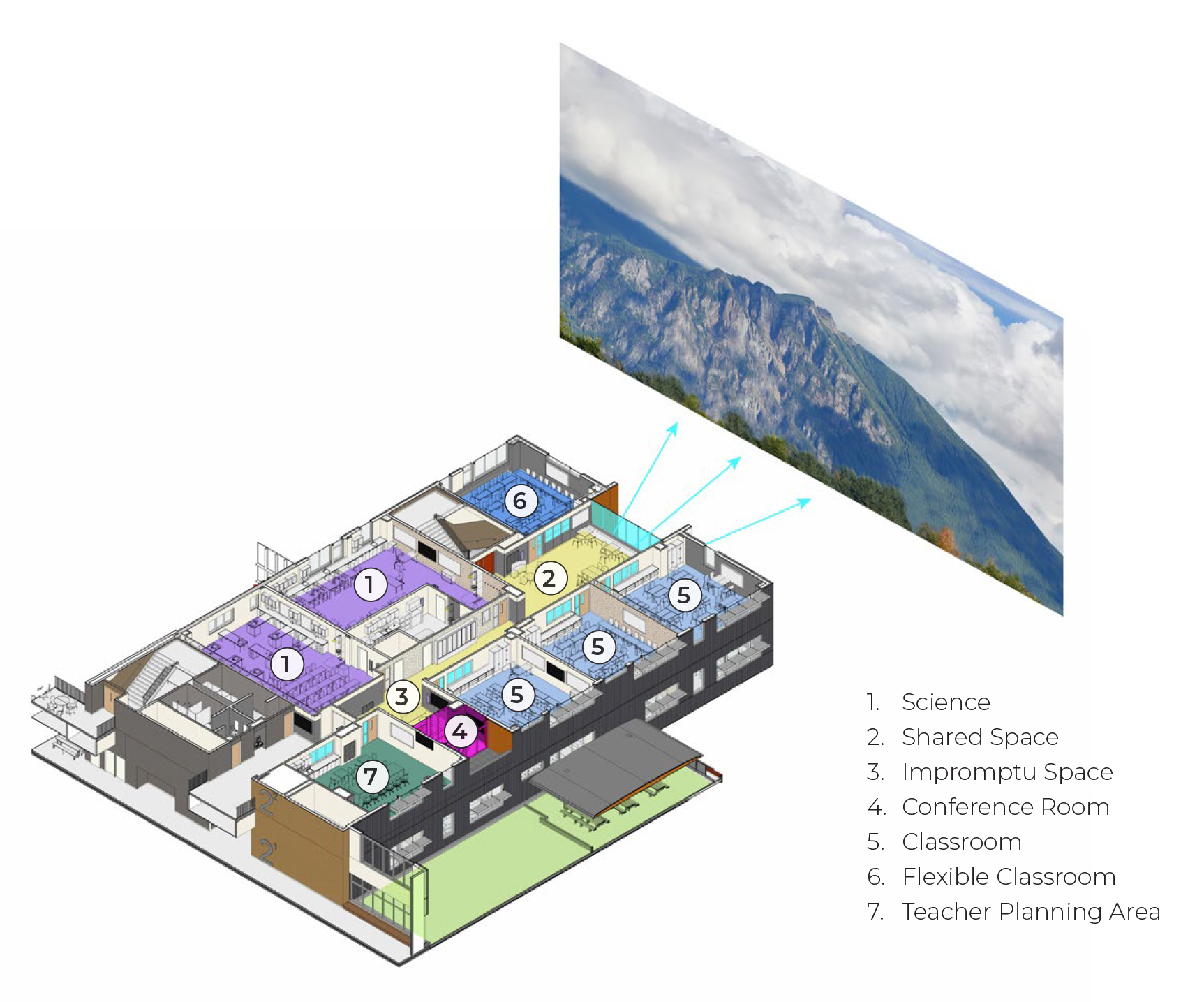
Student-centered environment
Mount Si High School is currently the only high school for the whole district, designed for 2,300 students with the flexibility to add 500 more in a future addition. The planning committee wanted to foster interdisciplinary collaboration and strong connections between groups of teachers and cohorts of students. They wanted their new school to remain relevant over many decades, able to evolve as pedagogies changed. Mount Si achieves these goals despite its large scale at 358,000 SF.
Instead of a centralized regional high school typology, the design transforms the environment into a student-centered experience both in physical and educational terms. Small Learning Communities, each 3-stories, include humanity classrooms, multiple pairs of science classrooms, open flexible space, small meeting rooms, and a teacher collaboration space. Students can spend most of their day in one part of the school, which improves familiarity and the chance to form peer-to-peer relationships.
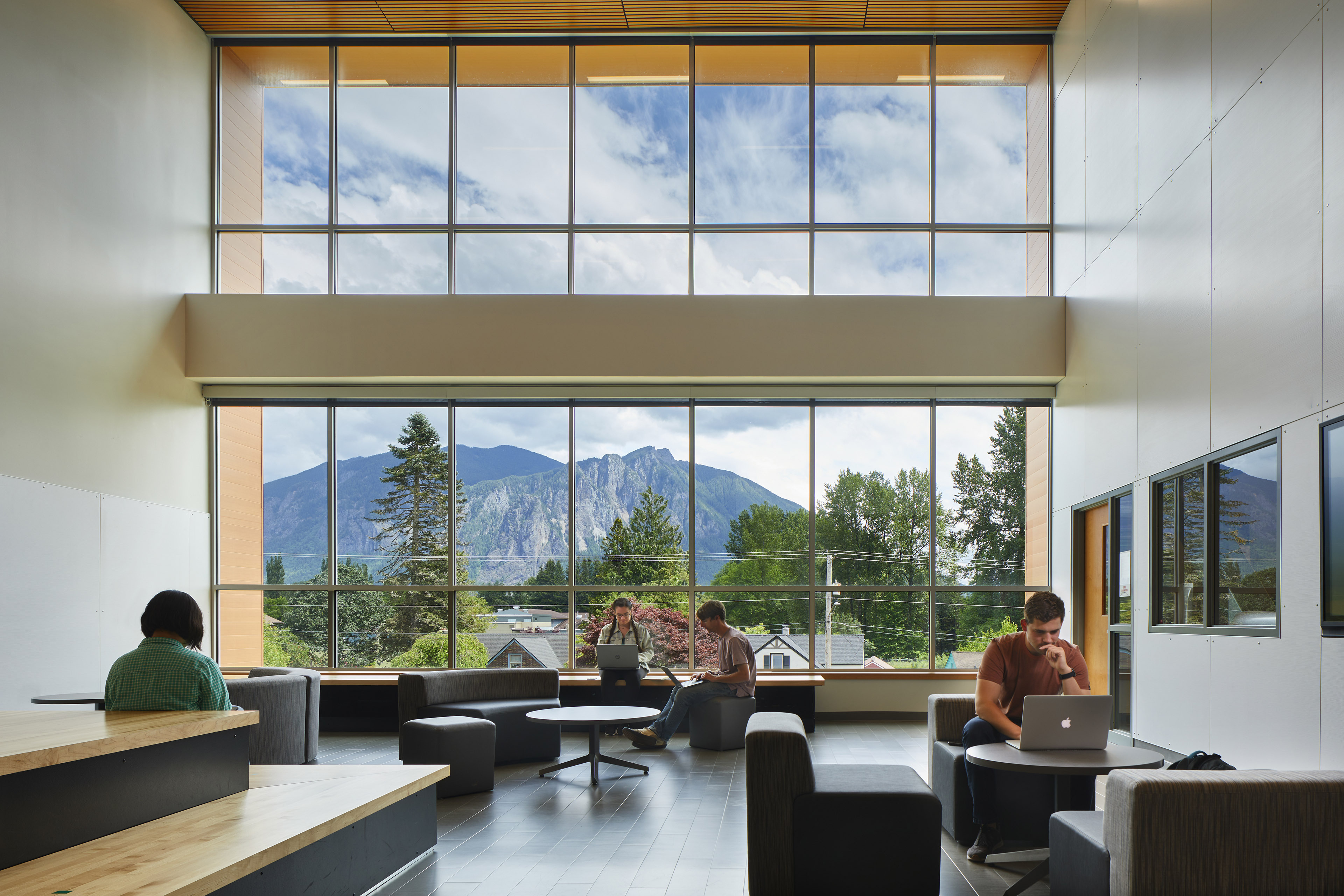
Informal learning spaces
Shared breakout areas are distributed throughout all the Small Learning Communities, varying in scale and character to suit introverts or extroverts, with some connecting vertically across multiple floors. Blurring the lines between social and informal learning spaces encourages teachers and students to explore and find their ideal places for specific curriculum tasks.
“We wanted flexible spaces that would adjust over the next 100 years of education, increased student collaboration to move outside of a classroom, to have something that was truly learner-centered and not just adult focused, to try interdisciplinary approaches, and to really meet the social and emotional needs of our students.”

Spatial inclusivity – dining in comfort
Meals times are key opportunities for socializing, so instead of one large space that could feel overwhelming, three separate commons allow students to gather and have lunch in a more personalized environment. Each invites dining on two floors, as well as outdoors, with engaging views of the school’s namesake mountain.
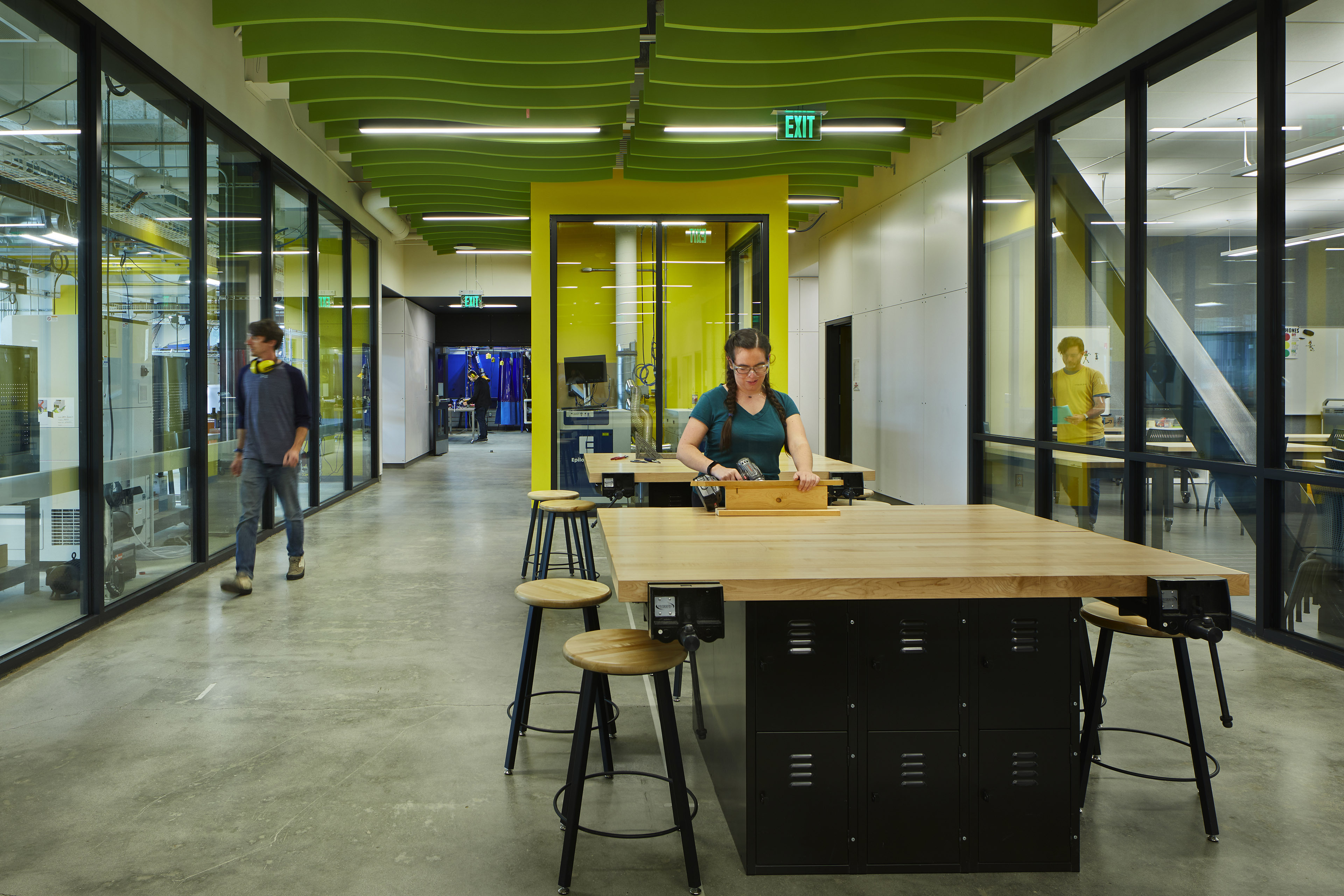
Career Technical Education promotes interdisciplinary discoveries and passions
The Career and Technical Education (CTE) area is adjacent to one of the large Commons to make it accessible and visible to all students. Shops and robotics classrooms are designed as a suite centered around a large collaboration and presentation space. Appealing, engaging, and highly functional, this space attracts participation in a variety of programs.
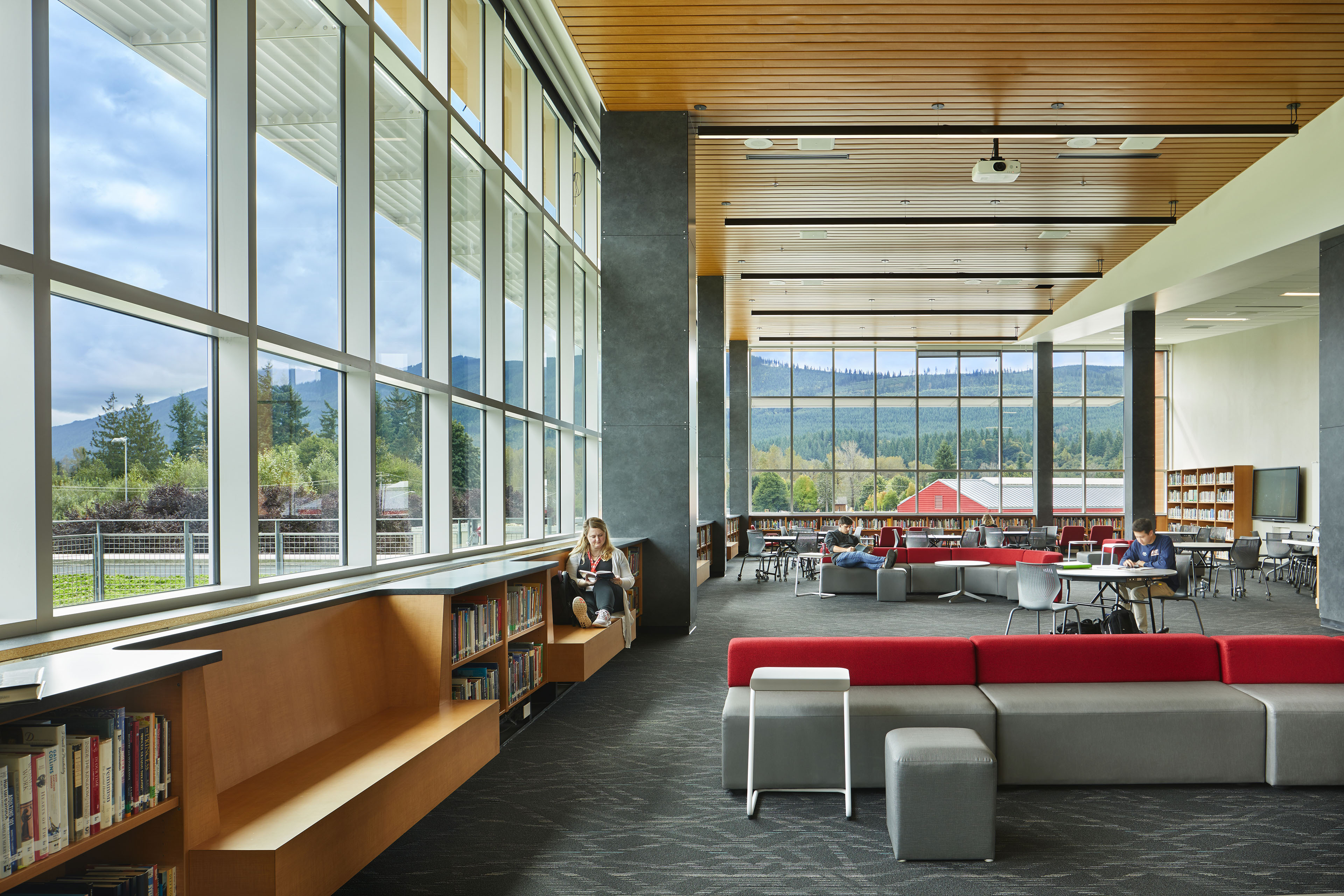
Reimagining the library as a research hub
Cantilevered above the main entry with views to Rattlesnake Ridge, the library is given an interactive and interdisciplinary role. The full suite includes a maker space, video lab, green screen film room, distance learning classroom, and a large book and media area. With these tools, the library serves as a research center with multiple synergistic programs, or a town hall with space for meetings of 150 people after hours.

Transparency and connections throughout the campus
Informal learnings spaces are successful when they are connected physically and visually to formal learning spaces. The entire school organization is based on this principle, which allows people moving through the building to see, experience, and participate in the action around them.
Biophilic design principles further intertwine architecture and landscape to provide welcoming, natural, human-scale experiences throughout the entire elevated campus. By alternating the scale and character of spaces, a sense of prospect and refuge enhances the dynamic perception of distance.
NAC News
- Mount Si High School Featured by Architectural Record in "Continuing Education: Climate Adaptation"
- Mount Si High School Featured by Architectural Record in "Continuing Education: School Security and Safety"
- Architectural Record - On the Boards: Schools of the 21st Century
- Conceptual Design is Chosen for the New Mount Si High School
Related Projects
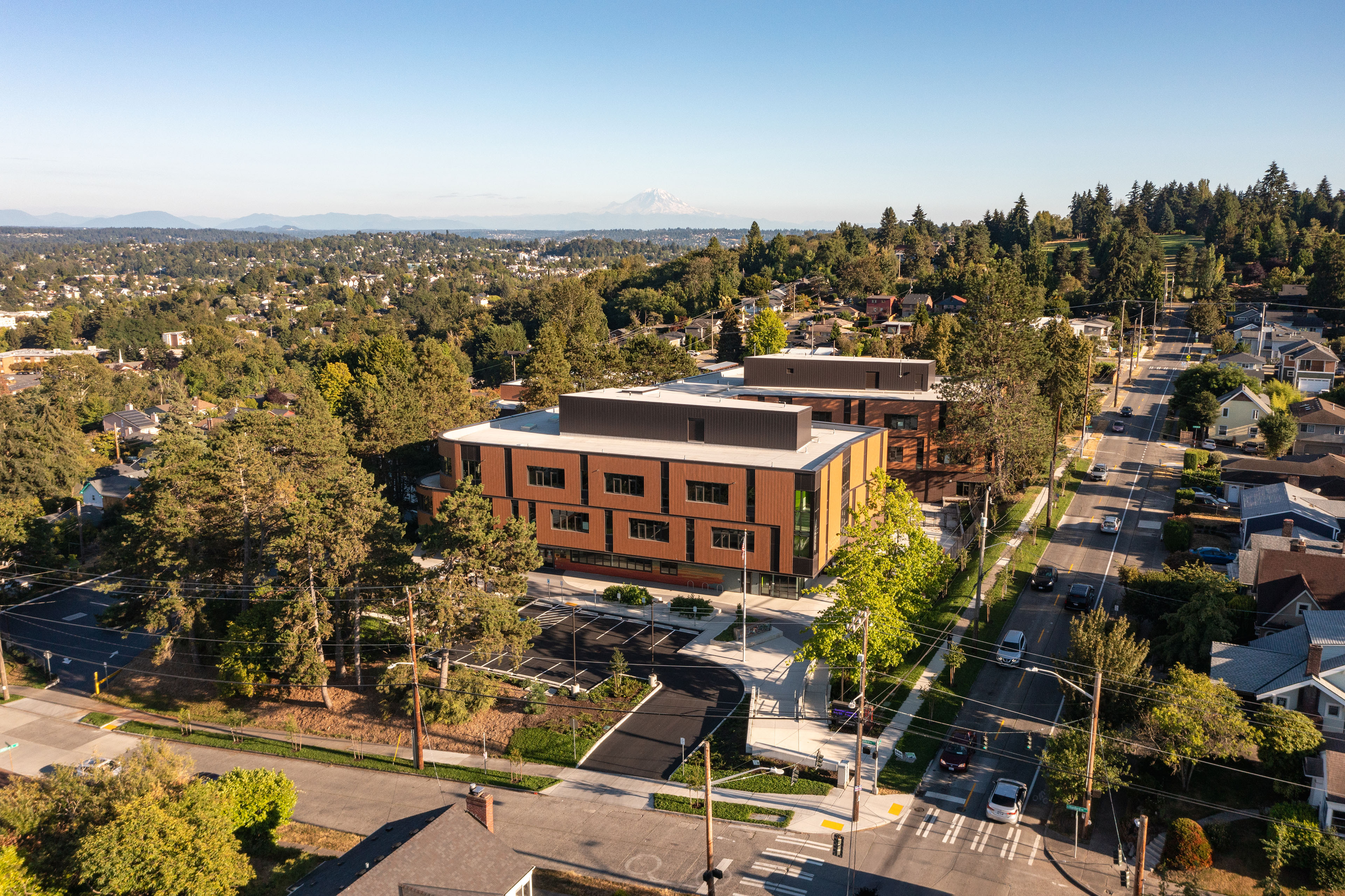
Kimball Elementary School
Seattle Public Schools
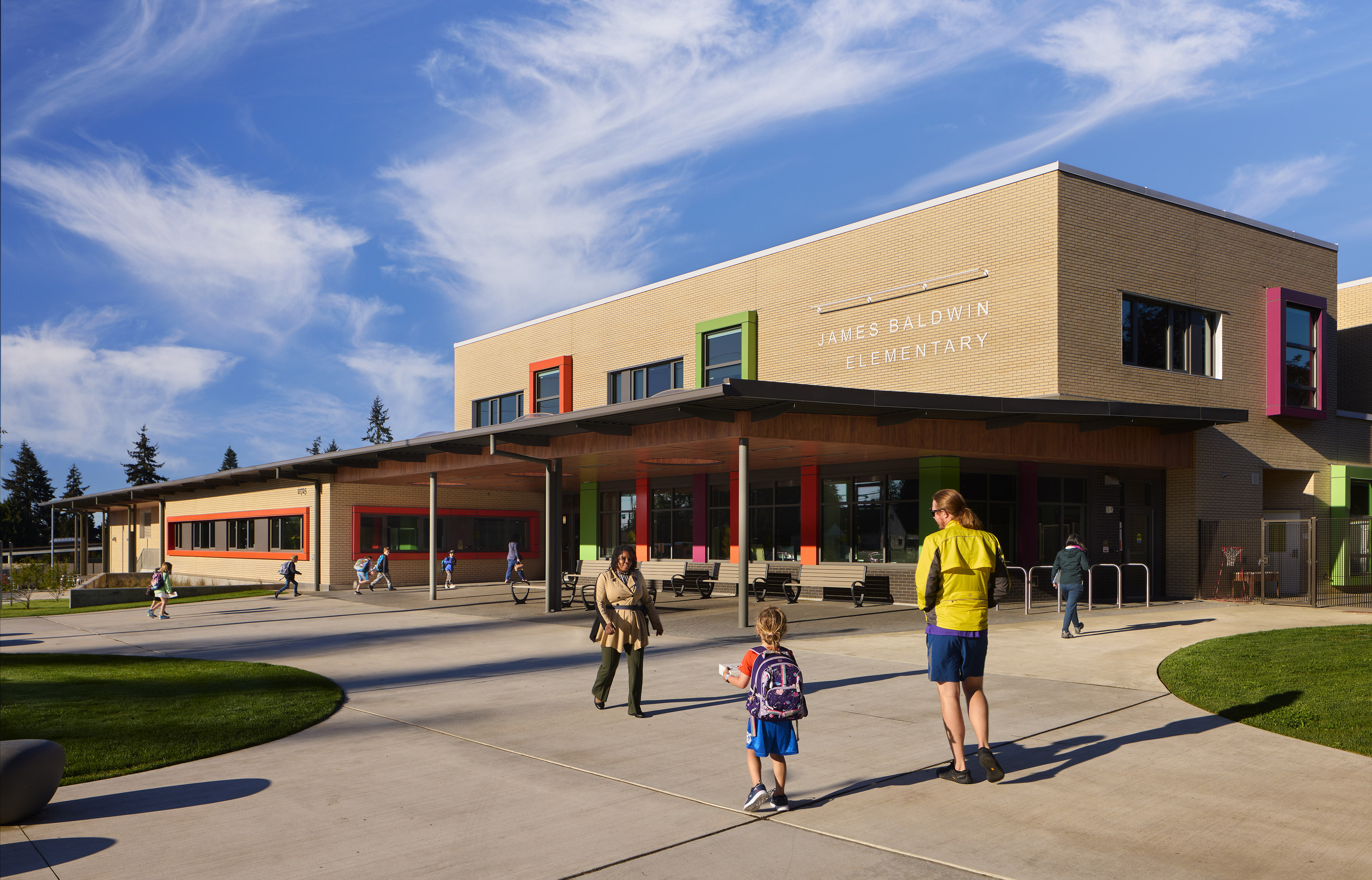
James Baldwin Elementary School
Seattle Public Schools
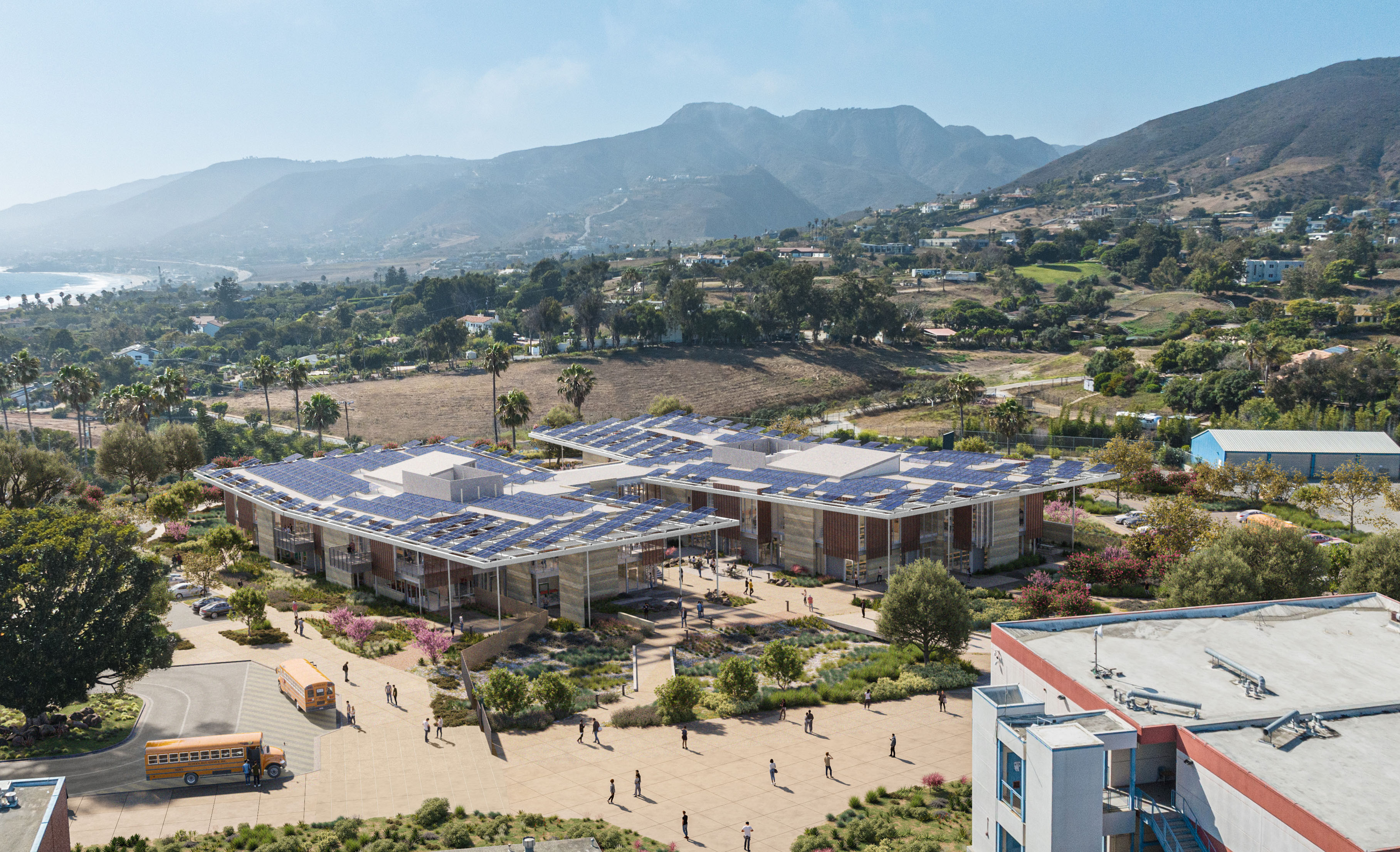
Malibu High School Campus Addition
Santa Monica-Malibu Unified School District

